A piece written by my good friend Kaustav Mitra of SAP “An Intensity Of Purpose” brought back to life thoughts long filed-away in the recesses of my memory. His mention of a poem written a long time ago by India’s poet laureate Rabindranath Tagore “Ekla Cholo Re” (Walk The Road Alone).
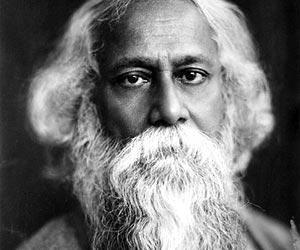
Tagore wrote the poem back in 1905, and went on to win the country’s first ever Nobel Prize for Literature in 1913.
It is a curious coincidence that I am thinking about this poem today, more than any other day.
This weekend I watched Christopher Nolan’s magnum opus INTERSTELLAR. Being a huge and longtime Chris Nolan fan since I watched his ground-breaking films (MEMENTO, INSOMNIA, THE DARK KNIGHT, INCEPTION, others), it was merely a matter of time that I would show up to watch his latest. (PS: No Spoilers Here !).
Its been a while since I watched a Sci-fi film that wrapped physics and the sheer power of story-telling around a core that was really built on a pure poetic sentiment. Read on.

Interstellar proved no different. But this time he had the advantage of added access to a formidable array of conceptual tools with which to weave all his complexity in the story. At the heart of, the film is a story of pioneers who chose to venture out into the ultimate unknown mankind has ever known – intergalactic space. But this attempt was prompted not by a sense of adventure (as most films would like to depict), but by an urgent need. Earth is close to its last gasps,food is running out, mankind is on the verge of doom.
But Nolan had the use of Time, Space and multiple other dimensions to transport our protagonists through. His non-linear style was made surprisingly easier this time around by the knowledge that theoretical physicists often use the concept of bending space & time around certain galactic objects. Something scientists have known a long time (thanks, Albert Einstein), observed in surrogate forms, but have never ever experienced directly. A group of brave scientists & engineers were being asked to now take a journey into that unknown aided only by a theoretical notion that still has many “holes” by way of proof.
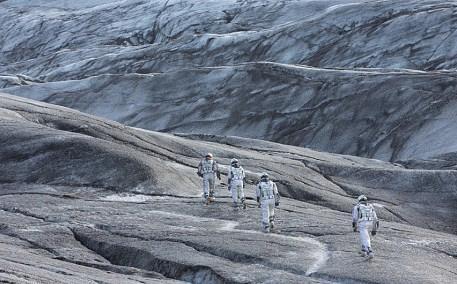
Galactic Pioneers The protagonists were pioneers in every sense of the word. They were stepping into uncharted territory. They were surely scared. They were also terribly conflicted about leaving their closest human connections (family, friends, the familiarity of things around them), and to have to make an uncertain promise that they would ultimately return back to them.
NOW FOR THE SCIENCE SECTION
Christopher Nolan clearly had a lot to draw from in the area of theoretical physics and astrophysics concepts. Kip Thorne ( a renowned physicist) who was also an adviser on the Interstellar project. One of the main themes in Interstellar is that characters can age at different speeds depending on where they are in the universe.
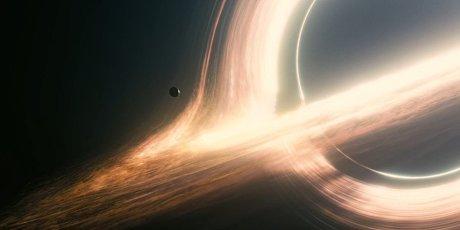
Interstellar Dimensions In 1912 Einstein predicted that gravity is a product of huge bodies, like Earth, bending space-time. What is even more extraordinary is that space is bending into a different dimension. On Earth the effect is minimal, adding just a few microseconds a day to the time of space. Consequently GPS satellites orbiting the Earth need to be adjusted to take into account that they are moving through time slightly more quickly – 40 microseconds a day – compared to a person with a SatNav on earth.
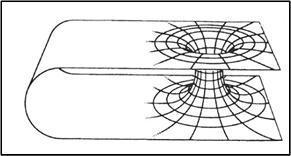
Bending Space The crew of Interstellar’s Endurance spaceship faced a headache when trying to get to Miller’s planet because it is trapped within the control of the huge black hole Gargantua. To avoid being sucked into the black hole, the spaceship had to be traveling at high speed to escape the huge gravitational and centrifugal forces.
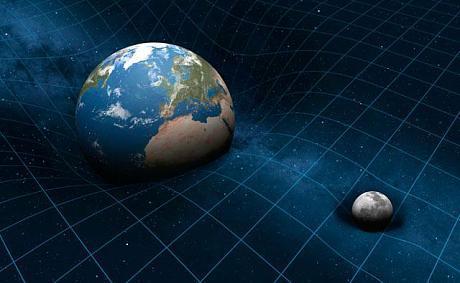
“Wormholes” In Interstellar, the crew overcame the vast distances between galaxies by jumping through a “wormhole”. If you imagine the universe is a flat sheet of paper you could travel between two points by moving in a straight line. However if you bend the paper so that the points touch through it, and then make a hole, you can reach that point much quicker. Essentially, a wormhole is where space and time are being bent so that points are now closer together.But Prof Thorne hastens to add: “I doubt the laws of physics permit traversable wormholes. If they can exist, I doubt very much they can form naturally in the astrophysical universe.
FINALLY, THE POETRY OF INTERSTELLAR
We have come to expect science fiction films to create representations that challenges assumptions we have grown accustomed to living in. In that broader sense, Interstellar is no different. What brought out the core sentiment of Interstellar was really a few lines from a Dylan Thomas poem (see below), that was repeated several times in the film. In a way its also the core sentiment of what we know as the “pioneering spirit”.
Its what led Steve Fosset to attempt the risky balloon-ride across the globe. It inspired Felix Baumgartner to attempt the highest ever jump from a balloon hovering 39-miles up at the edge-of-space. It inspired James Cameron to take that perilous submersible trip 7-miles deep to observe and film the Marianas Trench (the world deepest point in the ocean). It inspired Amelia Earhart to attempt her transatlantic flight back in 1928. It also inspired an intrepid 14-year old Dutch girl Janice Dekker to sail solo around the world in an old unpowered yatch her sailor-dad restored for her. (Her filmed-footage was turned into an amazing documentary MAIDENTRIP). And it keeps people like Richard Branson ticking restlessly with a vision of commercial space travel. Damn the celebrity, full steam ahead.
The poem “Do Not Go Gentle Into That Good Night” by Dylan Thomas (1914-1953) was published in 1951-52, but couldn’t be more true for these pioneers. Here’s how it goes.

Do Not Go Gentle Into That Good Night
Dylan Thomas, 1914 – 1953
Do not go gentle into that good night,
Old age should burn and rave at close of day;
Rage, rage against the dying of the light.
Though wise men at their end know dark is right,
Because their words had forked no lightning they
Do not go gentle into that good night.
Good men, the last wave by, crying how bright
Their frail deeds might have danced in a green bay,
Rage, rage against the dying of the light.
Wild men who caught and sang the sun in flight,
And learn, too late, they grieved it on its way,
Do not go gentle into that good night.
Grave men, near death, who see with blinding sight
Blind eyes could blaze like meteors and be gay,
Rage, rage against the dying of the light.
And you, my father, there on the sad height,
Curse, bless, me now with your fierce tears, I pray.
Do not go gentle into that good night.
Rage, rage against the dying of the light.
From The Poems of Dylan Thomas, published by New Directions. Copyright © 1952, 1953 Dylan Thomas. Copyright © 1937, 1945, 1955, 1962, 1966, 1967 the Trustees for the Copyrights of Dylan Thomas. Copyright © 1938, 1939, 1943, 1946, 1971 New Directions Publishing
